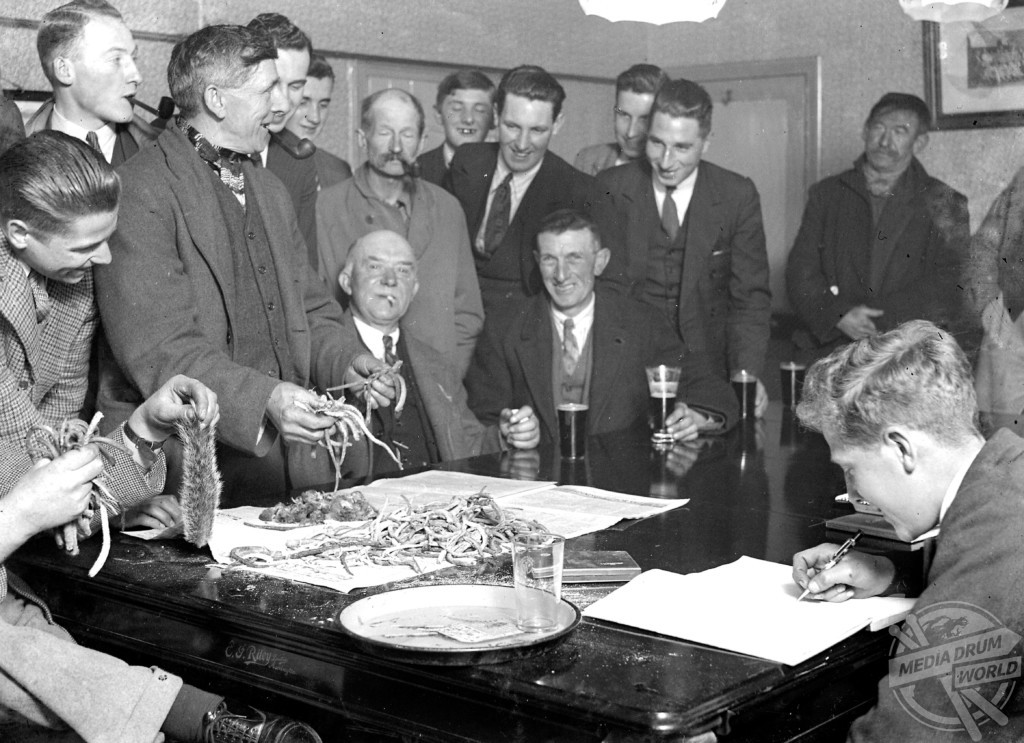
By Liana Jacob
GRISLY images have emerged of a time when English countrymen and local schoolboys were paid a bounty to kill local vermin and would gather in a local working men’s club to share their spoils in the form of the HEADS of sparrows and TAILS of rats.
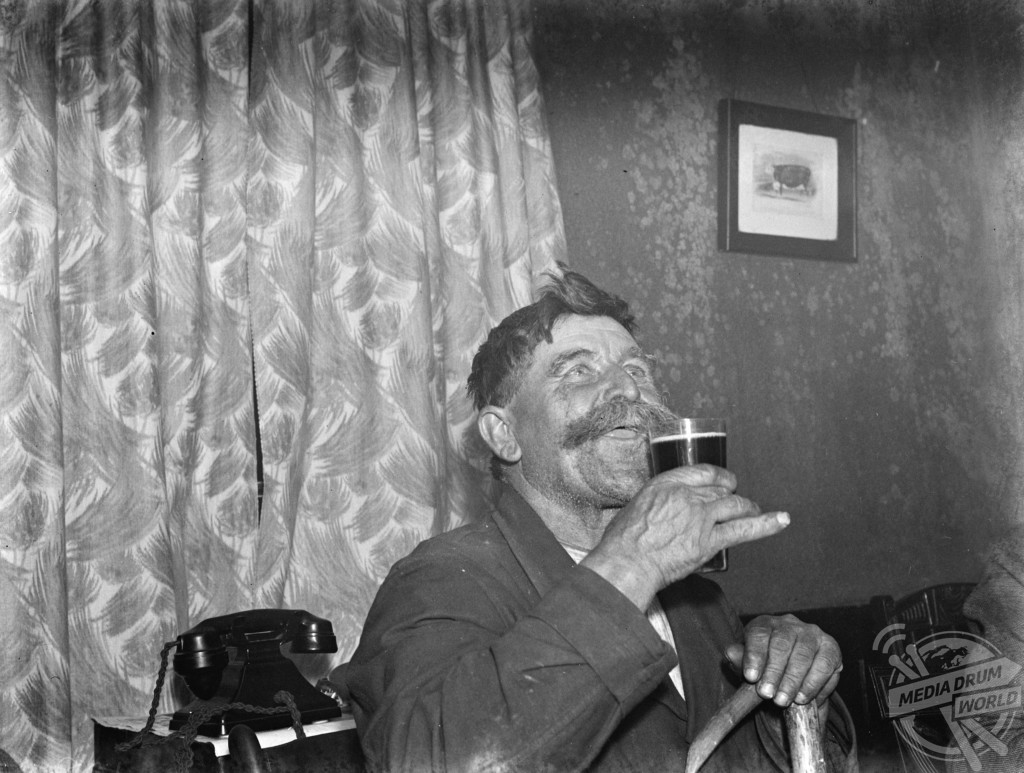
Retronaut / Topfoto / mediadrumimages.com
Disturbing photographs shows a farmer, Charlie Meadows, paying in his catch of rat’s tails, and a group of Rat and Sparrow Club members at a dinner party in Eynsford, Kent, 1939.
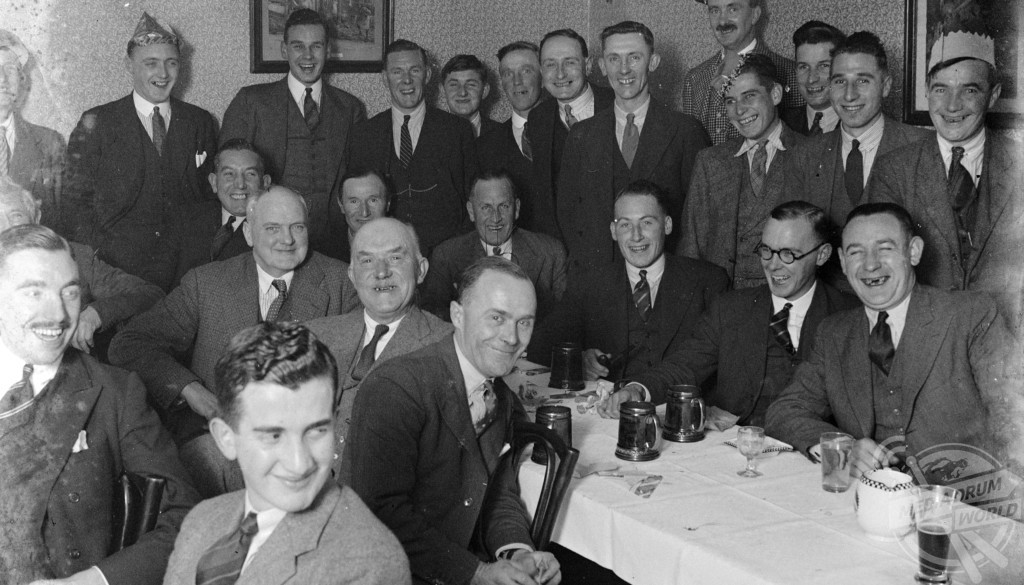
Retronaut / Topfoto / mediadrumimages.com
Other images show men examine the pile of rat’s tails on a table and the secretary of the club, Mr F Foreman, tallying up the rat’s tails, with Charlie Meadows enjoying a pint of beer in the background.
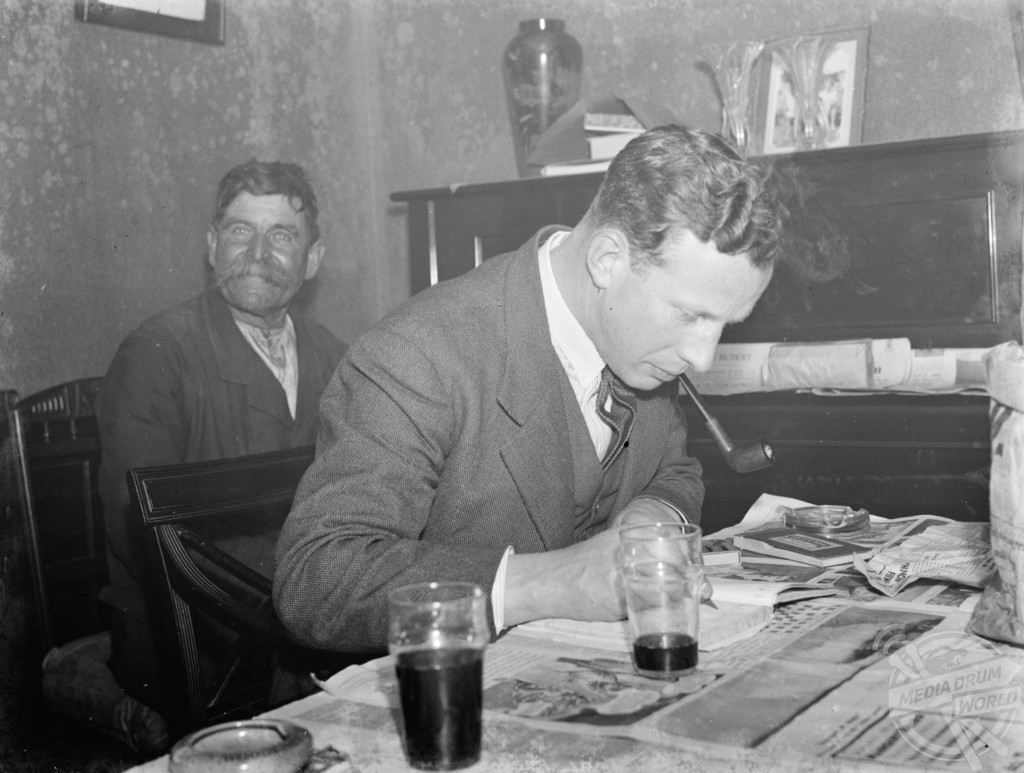
Retronaut / Topfoto / mediadrumimages.com
Further images reflect on the social aspect to the club and the way men come together through this now morbid-seeming pastime.

Retronaut / Topfoto / mediadrumimages.com
The Rat and Sparrow Club was a club where men and farmers attempted to get rid of their pest problem of rats and sparrow birds.
As a child in the 1920s and 1930s, Eric Wright had a role to play in controlling the numbers of vermin on the farms in the village of Rickling, Essex. Eric’s father was the farm bailiff at Rickling Hall, where the club was hosted.
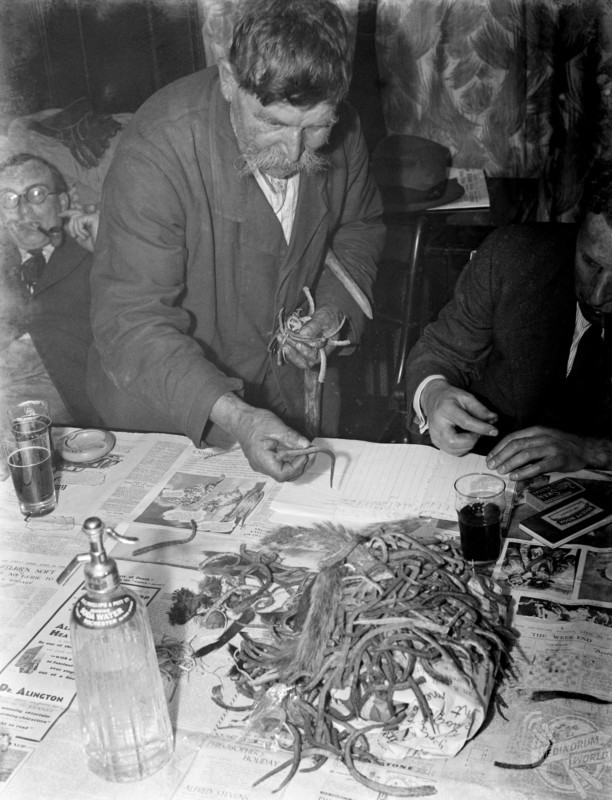
Retronaut / Topfoto / mediadrumimages.com
“It was a club whereby most of the men in the village were employed on farms and at that time it was prior to the rat poison era, so there were that many rats they were an absolute menace,” Eric said in an interview with Essex Record Office.

Retronaut / Topfoto / mediadrumimages.com
“My father, who was a bailiff at Rickling Hall, used to reckon that two-thirds of its harvest was for humans and one-third was for rats.
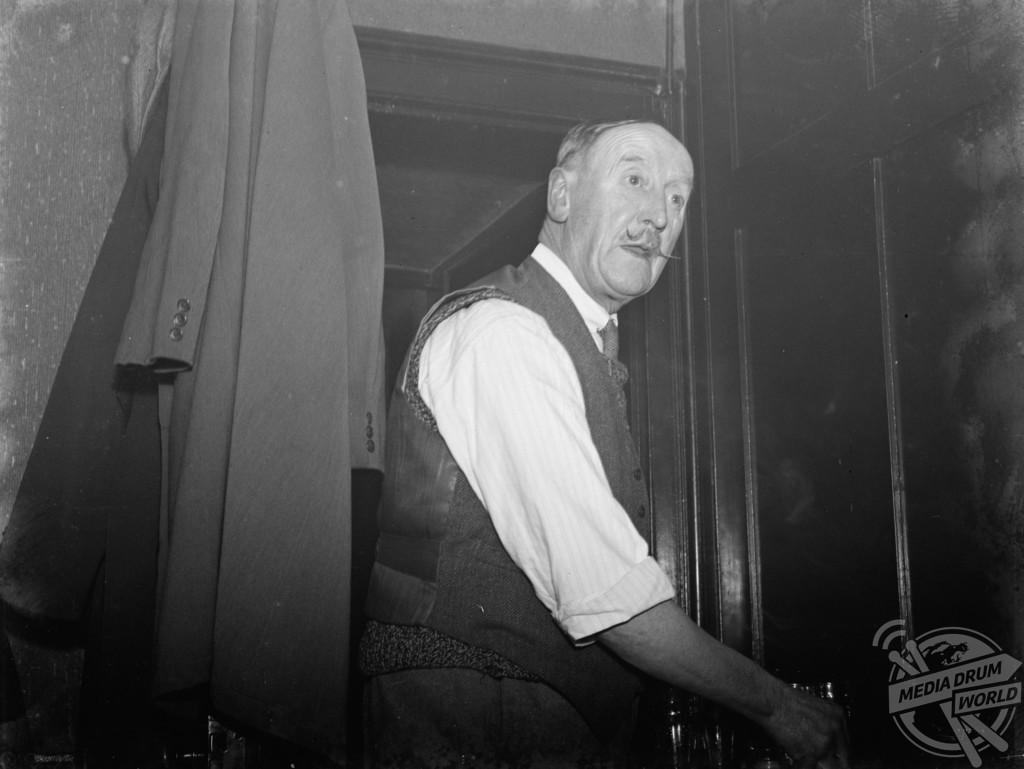
Retronaut / Topfoto / mediadrumimages.com
Eric further explains that men would have paid a shilling a year to be a member at the Rat and Sparrow Club, which is equal to 12 pence a year in today’s currency.
“You undertook to supply the tally secretary with, I believe, it may have been fifteen or twenty rat’s tails and something in the region of thirty to forty sparrows heads and that was half of your membership fee.
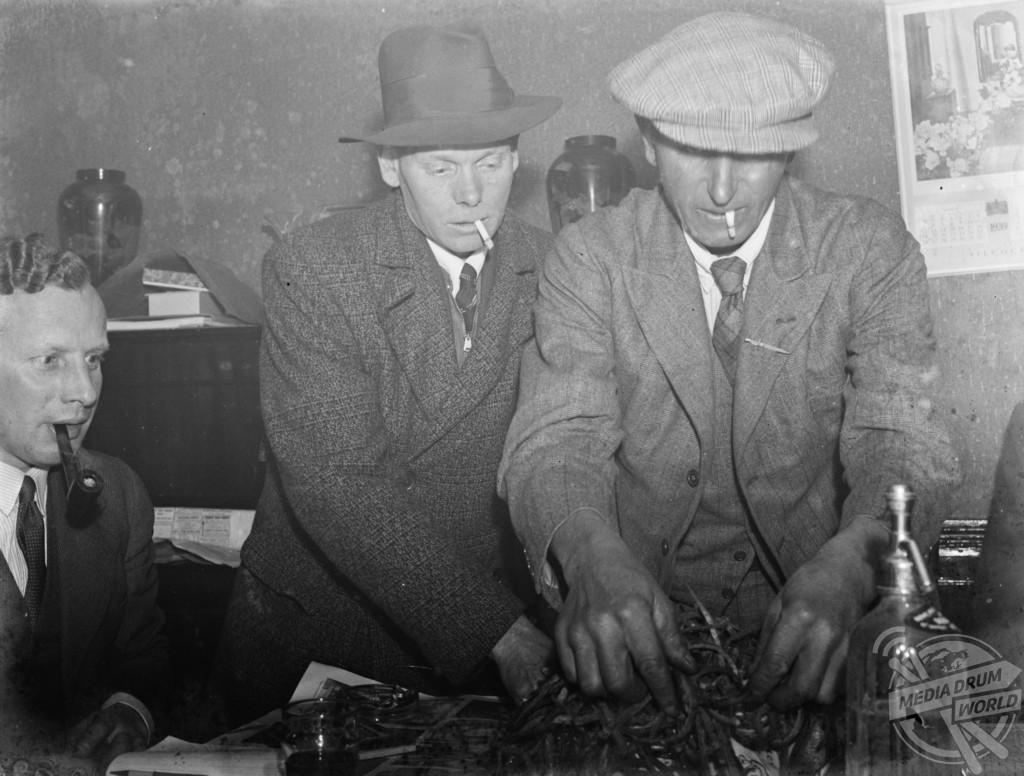
Retronaut / Topfoto / mediadrumimages.com
“A lot of the men couldn’t make their quota and that’s when boys came into the round. We used to go out nights with torches around the haystacks and put your hand into the stacks and get these poor little birds out, just pull their heads off and pop them into a tin and throw the other bit away.
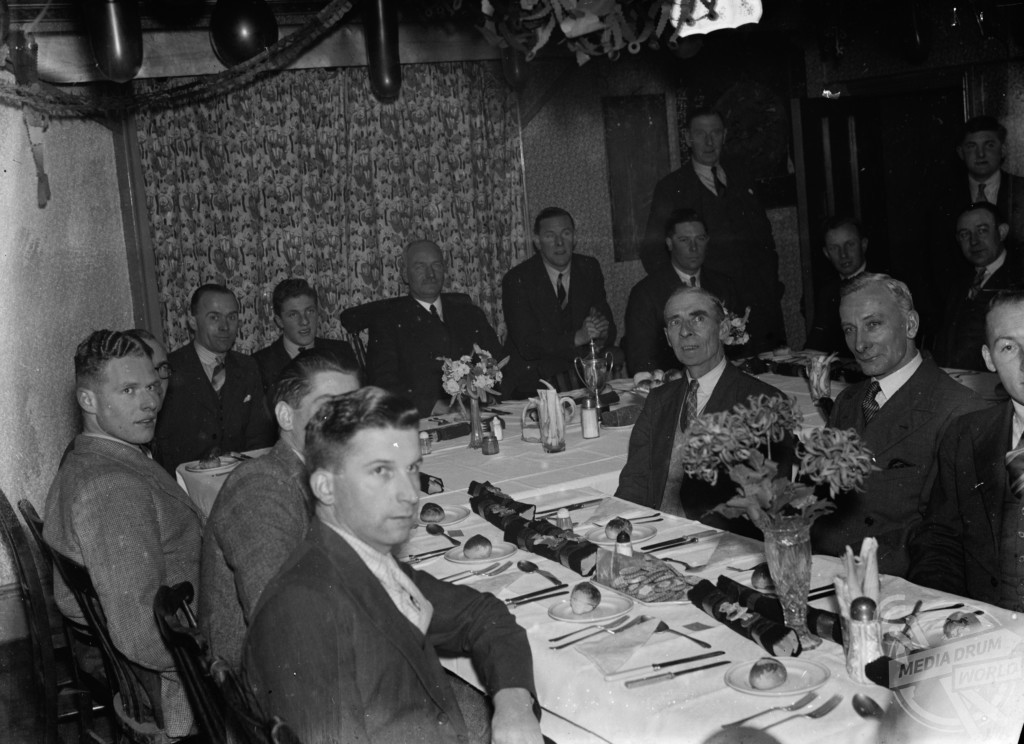
Retronaut / Topfoto / mediadrumimages.com
“With rats, we used to set cages with a piece of fish, they used to seem to go for the scent of a kipper, we used to tie that in the cage.
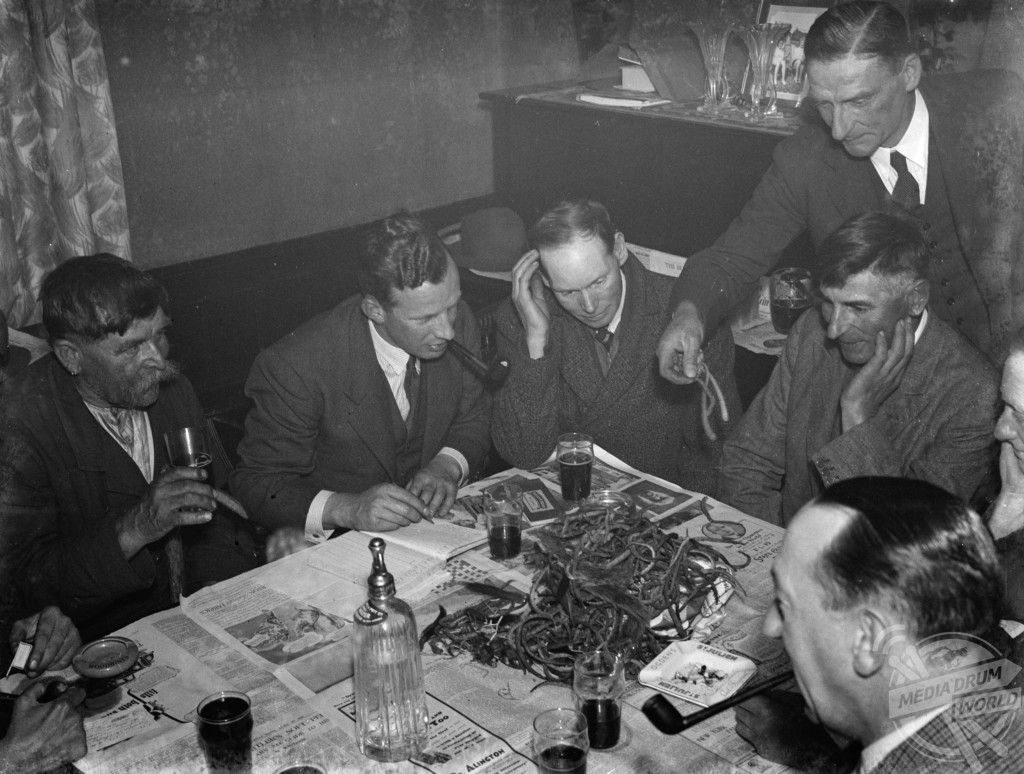
Retronaut / Topfoto / mediadrumimages.com
“Two or three rats would go in and then we used to use a pitchfork, throw the whole thing into the horse-pond, drown the rats and cut their tails off, take them to the tally man and whoever was on his records as having not made his quota before the rats and sparrows supper, we would perhaps get a penny each for these tails and a sparrows head.”






